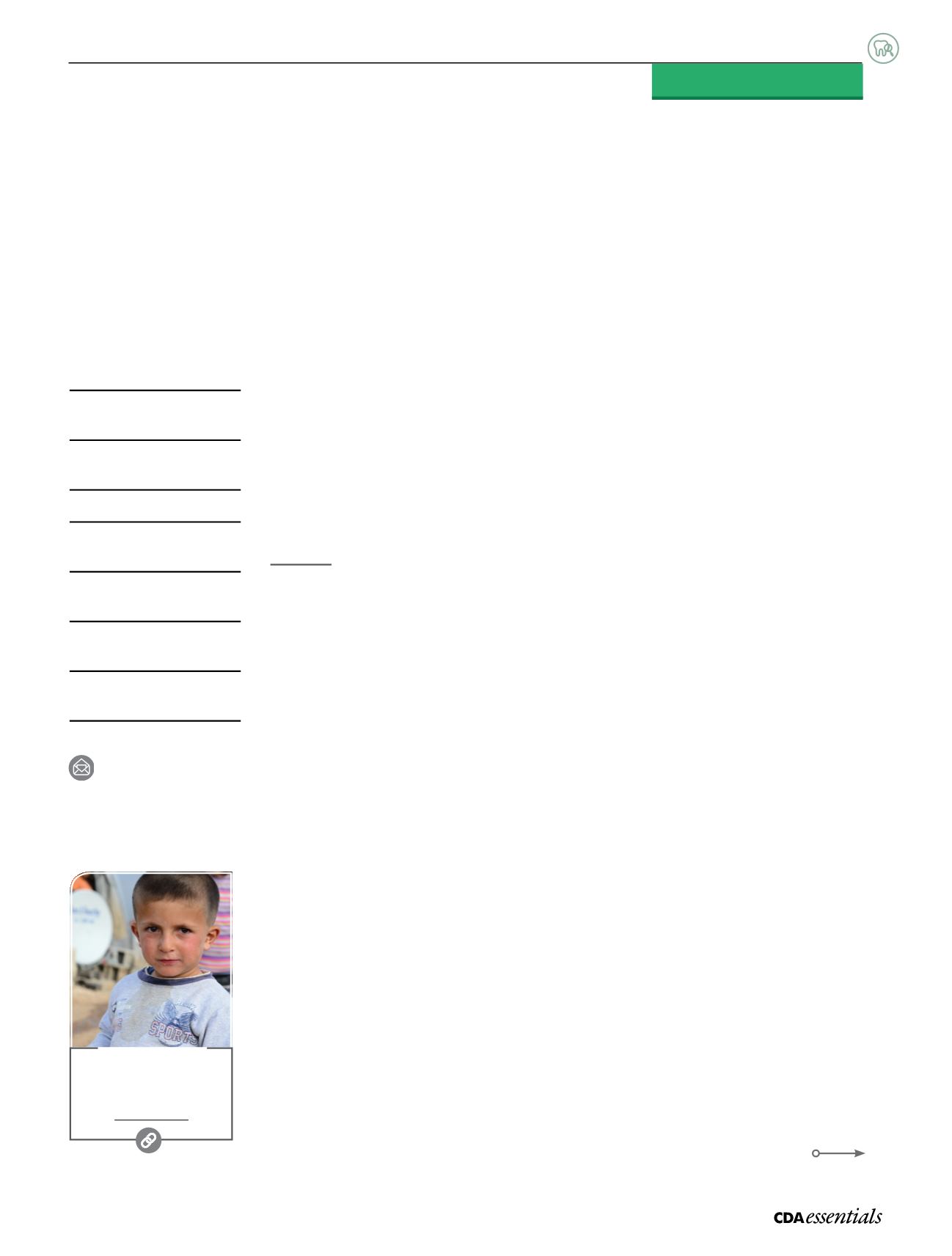

35
Volume 3 Issue 6
|
S
upporting
Y
our
P
ractice
The following is based on a research article originally published
in the “Applied Research” section of
JCDA.ca—CDA’s online,
open access scholarly publication that features articles indexed in
Medline, Journal Citation Reports and Science Citation Index.
Research Summary
More Online
Oral Health Status of Immigrant and
Refugee Children in North America
A Scoping Review
Dental caries is a major children’s oral health concern in Canada: among 6–19-year olds, the
prevalence is approximately 60% and the mean number of affected teeth is 2.5.
1,2
In particular,
disadvantaged children, such as most refugee and immigrant (“newcomer”) children, appear
to be at higher risk for dental diseases.
5
In Canada, immigrants represent 20.6% (6,775,800) of
the total population.
6
The aim of this scoping review was to assess the oral health status of the
children of refugees and immigrants; the barriers to appropriate oral health care and use of
dental services; and clinical and behavioural interventions for this population in North America.
Promoting the oral health status of newcomer children in North America requires timely
knowledge about the underlying factors affecting their access to oral health care. This
scoping review of selected studies on newcomer children in the United States and Canada
specifically addresses the following research questions:
❚
What is the oral health status of children of newcomers?
❚
What are potential barriers to their use of dental services?
❚
What interventions have been developed and implemented to improve their
oral health?
Results
Search Results
Several stages of screening reduced the number of articles that met our criteria to 32 studies
published between 1996 and 2014.
3-5,8,12-39
Oral Health Status of Children of Newcomers
Children of newcomer families tend to exhibit poorer oral health compared with their
non-newcomer counterparts, especially those whose families speak languages other than
English at home.
5,25,26,29,37
When compared with children of Canadian-born parents, children
of newcomers presented higher mean decayed/extracted/filled primary teeth (DEFT)
scores (3.05 vs. 1.83,
p
< 0.05) and mean decayed/missing/filled permanent teeth (DMFT)
scores (0.73 vs. 0.42,
p
< 0.05).
37
Similarly, in the United States, compared with children of
US-born parents, children of immigrants had a significantly larger number of carious surfaces
(11.5 vs. 9.4,
p
= 0.01)
5
and twice the prevalence of early childhood caries (odds ratio 2.06;
95% confidence interval 1.47–2.88).
4
The situation was even worse among refugee children,
who exhibited a greater number of untreated caries (up to about 75%).
14,16,20,26,32
Mona Reza
BSc
Maryam S. Amin
DMD,MSc,PhD
Adam Sgro
AnghamAbdelaziz
DDS
Dick Ito
DDS,MSc,FRCD(C)
Patricia Main
DDS,MSc
Amir Azarpazhooh
DDS,MSc,PhD,FRCD(C)
amir.azarpazhooh@
dentistry.utoronto.caFull article and
references available at
jcda.ca/g3















